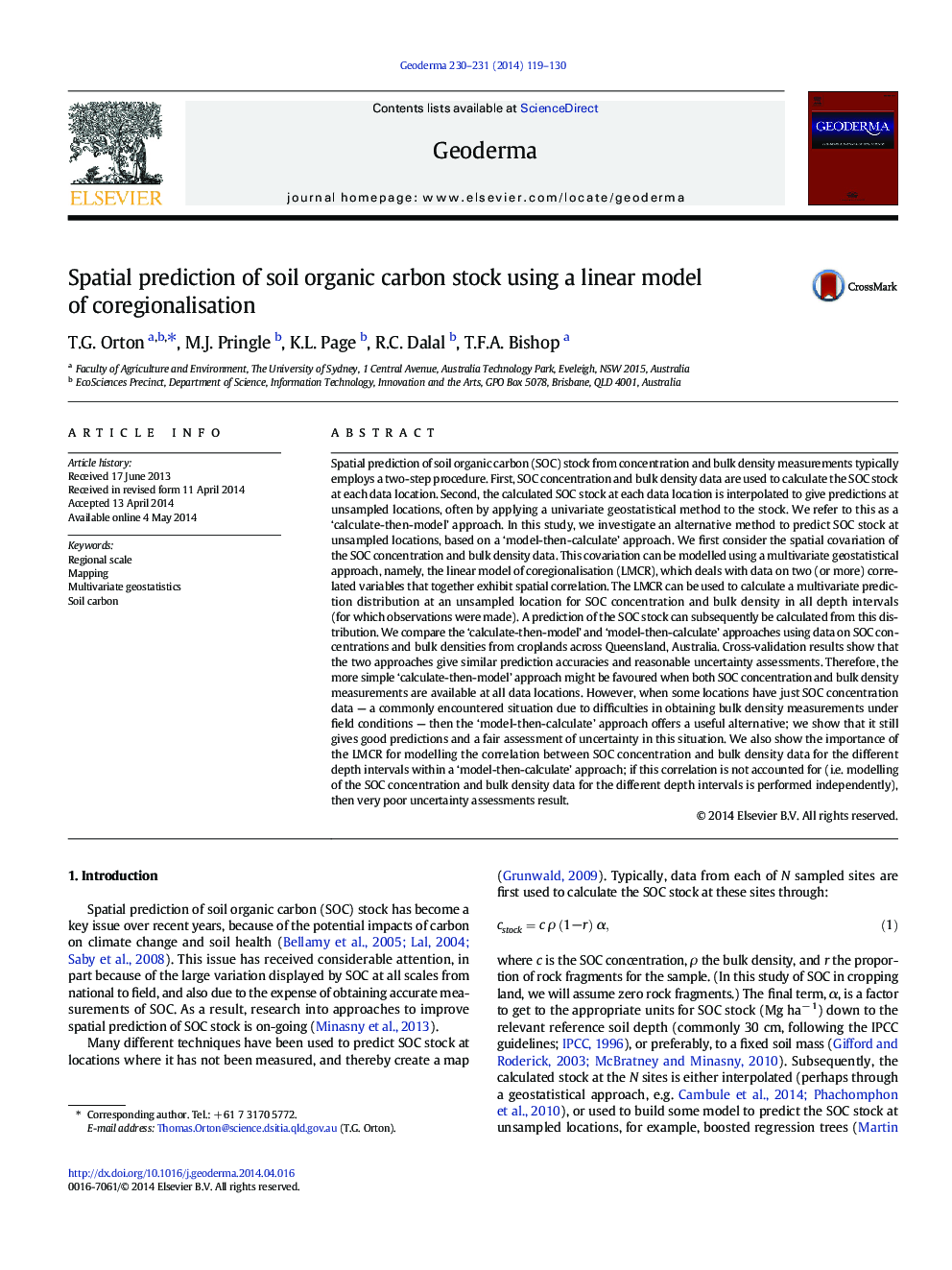| Article ID | Journal | Published Year | Pages | File Type |
|---|---|---|---|---|
| 4573238 | Geoderma | 2014 | 12 Pages |
•A ‘calculate-then-model’ approach gave good SOC stock predictions.•A ‘model-then-calculate’ (MTC) approach utilising a LMCR performed similarly.•This approach also performed well when some bulk density data were missing.•MTC approach also tested ignoring SOC concentration and bulk density correlation.•Prediction variance was then underestimated.
Spatial prediction of soil organic carbon (SOC) stock from concentration and bulk density measurements typically employs a two-step procedure. First, SOC concentration and bulk density data are used to calculate the SOC stock at each data location. Second, the calculated SOC stock at each data location is interpolated to give predictions at unsampled locations, often by applying a univariate geostatistical method to the stock. We refer to this as a ‘calculate-then-model’ approach. In this study, we investigate an alternative method to predict SOC stock at unsampled locations, based on a ‘model-then-calculate’ approach. We first consider the spatial covariation of the SOC concentration and bulk density data. This covariation can be modelled using a multivariate geostatistical approach, namely, the linear model of coregionalisation (LMCR), which deals with data on two (or more) correlated variables that together exhibit spatial correlation. The LMCR can be used to calculate a multivariate prediction distribution at an unsampled location for SOC concentration and bulk density in all depth intervals (for which observations were made). A prediction of the SOC stock can subsequently be calculated from this distribution. We compare the ‘calculate-then-model’ and ‘model-then-calculate’ approaches using data on SOC concentrations and bulk densities from croplands across Queensland, Australia. Cross-validation results show that the two approaches give similar prediction accuracies and reasonable uncertainty assessments. Therefore, the more simple ‘calculate-then-model’ approach might be favoured when both SOC concentration and bulk density measurements are available at all data locations. However, when some locations have just SOC concentration data — a commonly encountered situation due to difficulties in obtaining bulk density measurements under field conditions — then the ‘model-then-calculate’ approach offers a useful alternative; we show that it still gives good predictions and a fair assessment of uncertainty in this situation. We also show the importance of the LMCR for modelling the correlation between SOC concentration and bulk density data for the different depth intervals within a ‘model-then-calculate’ approach; if this correlation is not accounted for (i.e. modelling of the SOC concentration and bulk density data for the different depth intervals is performed independently), then very poor uncertainty assessments result.
